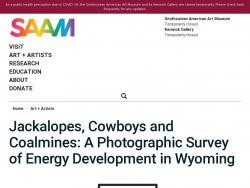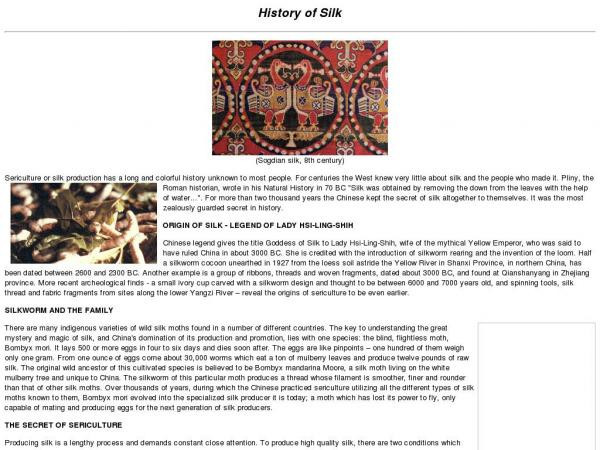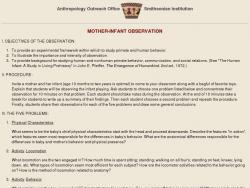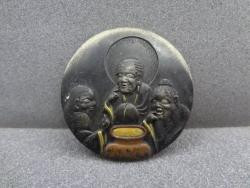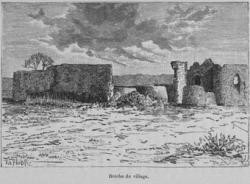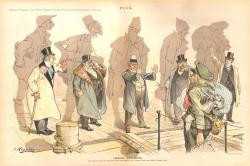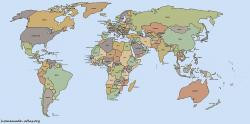Kate Harris
Social Studies teacher
Pittsburgh CAPA
Middle School (13 to 15 years old), High School (16 to 18 years old)
Teacher/Educator
Language Arts And English, Civics, Literature, Cultures, Economics, Social Studies, Geography, Writing, US History, Arts, Other
I'm a history-lover, art fan, and bookworm. I taught high school history (U.S. History and World Religions) for ten years in North Carolina, teach currently in Pittsburgh, PA, and am working to help teachers make the most of this new resource!
Kate Harris's collections
Tools of the Labor Movement
The United States labor movement began in full force during the late 19th century and peaked during World War II. Workers learned that by joining together in unions, they could exert more pressure on employers and the government to protect their rights and improve labor conditions. This collection includes a variety of resources related to the United States labor movement, particularly the various tools and strategies used to create change.
Guiding questions to consider are:
-What rights do workers desire?
-How can labor unions influence employers, government, and the public?
-What tools and strategies are most effective for improving working conditions? Consider: boycotts, picketing, appeals to the media, strikes, walk-outs, and slow-downs.
-How does the public perceive labor unions? How does this impact their results?
-Are women and minorities included in the labor movement? Were they always?
 Kate Harris
Kate Harris
25
The "Wild West"?
<p>The West has always held a special place in American culture. In 1893, Frederick Jackson Turner wrote what is known as the "frontier thesis," arguing that our sense of democracy and hard work has been shaped by experience of survival and growth along the frontier. More than a century later, Americans still idolize the cowboy image and are fascinated by the train robbers, saloons, and violence of the era. How accurate is our mental picture of the "Wild West"? What were the realities of life on the frontier in the late 19th and early 20th century? What was lost and what was gained as America closed out the frontier? Most importantly, why has the West continued to fascinate Americans and play such a prominent role in popular culture?</p>
<p>This learner resource includes images, artifacts, and movies that deal with the concept of the American West. Students will want to read Turner's essay and answer the attached questions. Then, they will focus on choosing images and ideas to include in a movie trailer or poster advertisement that presents a more accurate image of turn of the century western life.</p>
 Kate Harris
Kate Harris
29
From Ancient India to a Studio Near You: Yoga's History
<p>This collection explores yoga's roots in ancient India and how its practice has changed as it has migrated to the West. There are questions embedded throughout the collection, which includes readings, images, links to outside websites, video, and a podcast. </p><p>Essential questions ask:</p><p>What are the roots of the practice of yoga? </p><p>Who claims to have invented it and what were the original goals?</p><p>How did it make its way to the western world and how has it changed through that process?</p><p>Tags: Hindu, Hinduism, India, religion, exercise</p>
 Kate Harris
Kate Harris
13
How Did Artists View the Civil War? A Collection using a Visible Thinking Strategy
This collection uses a visible thinking strategy called "See-Think-Wonder" from Harvard's Project Zero to help students analyze a Civil-War era sketch to determine context and perspective. After completing the routine, students will learn more about the image and the artist who made it, as well as view art representing a very different point of view.
For more on this strategy, see the "Notes to Other Users."
 Kate Harris
Kate Harris
8
Alexander Gardner's Photographic Sketchbook of the War
<p>This is a collection of photographic plates from Alexander Gardner's Civil War Sketchbook that can be used for teaching about the Civil War in a number of ways. Students can explore the collection and look for images that help them learn about one of the following themes:</p><p>1) Technology</p><p>2) Military Strategy</p><p>3) Life in Military Camps</p><p>4) Death and Destruction</p><p>5) Photography as Art and Communication</p><p>The plates are in order as they appeared in the book, although some have not been included in order to limit the size of the collection. Note that some of the images have additional information linking to external websites with lesson ideas or simply more background on the particular photograph. In addition, be aware that each plate has two images, the first showing the photograph and the second showing Gardner's caption. The three final photos are not from the sketchbook, but show some of Gardner's more famous images and reveal more about the man himself.</p><p>WARNING: Some of the images in this collection include pictures of the dead on the battlefield, which some viewers may find disturbing. Please carefully consider whether use of this collection is appropriate for your specific audience.</p>
 Kate Harris
Kate Harris
40
What do Anthropologists Do?
There are a number of lesson plans devoted to anthropology available from the Smithsonian. This collection links to several of the best lessons and teaching resources and, where necessary, provides short summaries of what each are, so teachers can easily use them in their own classrooms.
It is focused on lessons and resources appropriate for middle and high school classrooms. The last four resources reference the case of Ishi, originally described as "the last Yahi Indian," and an example of flaws in the early approach to anthropology. The Smithsonian housed his brain, which had been donated to science by the University of California, from 1917 to 2000, when it was repatriated to his tribe.
 Kate Harris
Kate Harris
18
The Three Vinegar Tasters and Daoism
<p>This collection includes a brief overview of Daoism, Confucianism, and Buddhism. It focuses on the story of Laozi and his ideas about the Dao and the balance between yin and yang. It includes two short passages from the Dao de Jing, assessment questions throughout, and a final task where students create their own collection about Daoism.</p><p>Tags: Dao, Confucius, Tao, Buddha, Laozi, China, religion, philosophy</p>
 Kate Harris
Kate Harris
8
Evolution of an Artist: William H. Johnson
<p>The clippings, paintings, and other items here will all help you develop an understanding of William H. Johnson's life and growth as an artist. First, read the biography in the first resource. Then, try to order the remaining collection items from earliest to latest, using clues from the informational text and the style and subject of each work. Once finished, review the progression you have created. How would you describe the evolution of Johnson's art? Can you connect changes in his art to world or personal events?</p><p>tags: Harlem, Federal Art Project, sorting, folk art, African-American, painter</p>
 Kate Harris
Kate Harris
31
New Deal Organizations: Relief, Recovery, or Reform?
For each of the images in the collection, determine which New Deal organization it is representing. Think about whether that organization is a good example of relief, recovery, or reform. Some images can be used in more than one way, so be prepared to defend and explain your answers to the class.
 Kate Harris
Kate Harris
28
The History and Spread of Islam
This collection can be used by students to explore the founding, history, and spread of Islam. Includes short informational texts paired with artifacts from around the globe and some links to additional resources. Students are tasked with tracking the countries that are mentioned on a map, taking notes on how the religion spread, and how the religion may have changed as it spread to new areas and ethnic groups. There is a quiz to assess their understanding of these concepts at the end.
The guiding questions for this collection are:
1) Where was Islam founded and where did it spread?
2) How did the religion spread from place to place?
3) How were the practices and the beliefs adapted by the people of different geographic areas?
 Kate Harris
Kate Harris
36
Teaching about Andrew Jackson
This collection includes artifacts, lesson plans, and teaching ideas about Andrew Jackson, including his role in the War of 1812 and his presidency.
 Kate Harris
Kate Harris
32
Sacred Texts
<p>This is a collection of teaching resources about sacred texts used in a variety of religions. Judaism, Christianity, and Islam are all featured in many artifacts, but there are also some examples from Hinduism, Buddhism, and Daoism. Ideas for teaching and questions are located throughout the collection on the notebook tab. </p><p>Some overall guiding questions to consider using with your students might be:</p><p>-Are the texts treated as revelations? Are they inerrant? You may want to define these words with your students and ask them to research the answers. </p><p>-How do different religions treat their texts? Are there special objects or rituals used in conjunction with the texts?</p><p>-Why was it important for religious texts to be written down? How can the form of a text change who has access to the religion's teachings?</p><p>-What kinds of decorations are used in and on the texts? Why do you think that is?</p><p>Tags: Christianity, Jesus, Bible, Judaism, Torah, Old Testament, Islam, Quran, Muhammad, Hindu, Buddha, Daoism, China, India, religion, belief, philosophy, compare contrast</p>
 Kate Harris
Kate Harris
24

